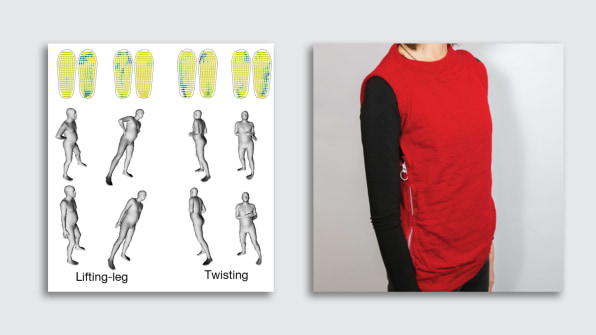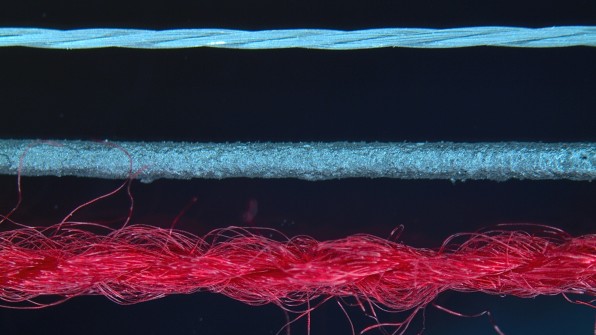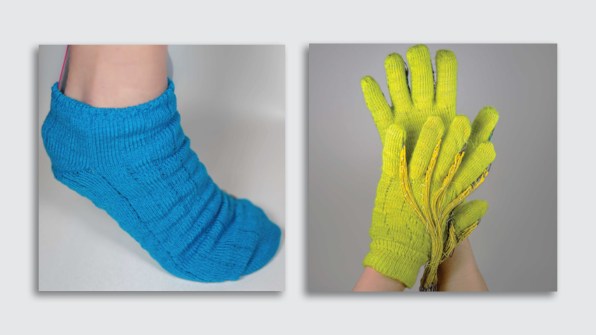READ STORY ORIGINALLY PUBLISHED ON FAST COMPANY.COM
Do you slouch at your desk? Or drag your feet when you walk? Soon, you might be able to wear a vest or a pair of socks that can sense your body’s movements and gently nudge you to improve your posture.
Scientists at Massachusetts Institute of Technology’s (MIT’s) Computer Science and Artificial Intelligence Lab (CSAIL) have developed a new fabric that looks and feels like any other woven material that can sense pressure from the person wearing it. In a new paper published in the science journal Nature, they describe how sensors in this new material can be used to gather data about people’s posture and body movements. This could be useful in a variety of settings, including athletic training, monitoring the health of elderly patients, and identifying whether someone has fallen over.
Over the past decade, there has been a wave of innovation around wearable electronics, from jewelry that tracks the body’s vitals to yoga pants that send pulses to perfect your posture. MIT graduate student Yiyue Luo, lead author of the new paper, says that much of the wearable tech on the market cannot be easily plugged into the current apparel supply chain. That’s because when fabric is embedded with hundreds of sensors, it is common for a few of those sensors not to work or work ineffectively as the material moves and interacts with the body and the environment. This makes the subsequent data inaccurate. “Traditionally its been hard to develop a mass-production wearable that provides high-accuracy data across a large number of sensors,” Luo says in a statement.

To tackle this problem, the team created a fabric that is covered in many sensors, expecting some of them to fail and others to work poorly. Then they developed a self-correcting mechanism that uses a machine learning algorithm to identify when a sensor has failed, and adjust for it so the data isn’t skewed. This modification could make their fabric easier to incorporate into many different kinds of garments and gather accurate data.On the surface, the new material feels like any other knitted fabric, like wool or acrylic. The sensors are embedded at the fiber level and then woven to create yarn. This yarn is then knitted into textiles that are designed to be soft, stretchy, and comfortable, so the wearer moves naturally while wearing the garment.

So far, the team has several prototypes of garments that demonstrate what the material can do. There are socks that can learn from how the foot is moving. A vest can identify how your body is moving, what materials you’re touching, and how you’re interacting with your surroundings. More broadly, the idea is to create garments that can analyze the wearers’ movements then connect this data to an app that can coach them to change or improve their behavior. This could apply to the everyday person who slouches at their desk to the experienced athlete who wants to improve their performance by making small changes to their posture.

In a truly futuristic world, the scientists believe they can use the data they gather from this material to train robots to move and respond in a way that more closely resembles human behavior. They could also incorporate the material onto robots so they can better sense their environment, instead of just seeing it with computer vision. “Imagine robots . . . that have ‘skins’ that can provide tactile sensing just like we have as humans,” Wan Shou, a postdoc at CSAIL, said in a statement. The team hasn’t yet built such a robot, but they plan to work with robotics researchers down the line.

